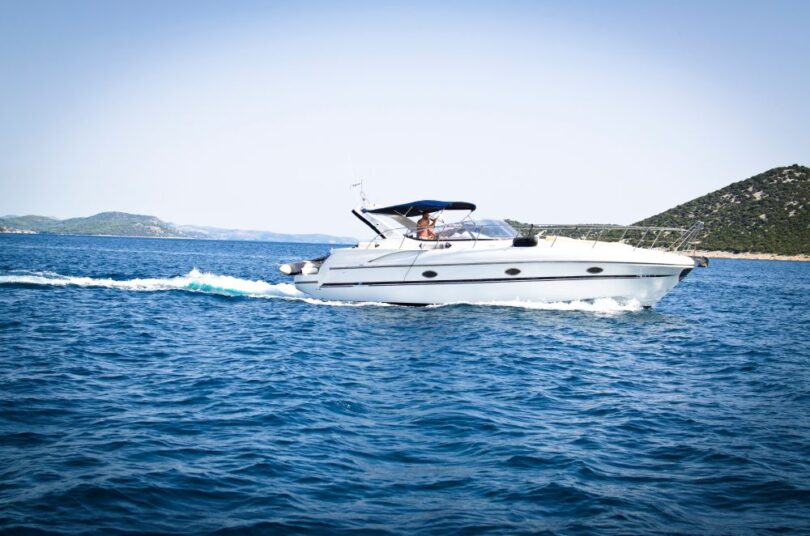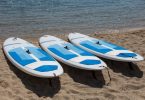Sailing is a timeless art first recorded in 3500 BC on an Egyptian vase. And in this fascinating world lies the intricate design of custom boats contemporarily. In the past, boat customization was not a thing until Paul Mann broke the waters in 1988 with his first personalized sports fishing vessel, Gannett.
After his 53 ft. vessel, many custom builds, such as the Hog Wild and Grand Slam, followed suit. These personalized designs had a significant impact on the dynamics of sailing.
In recent years, unlike Mann’s 53 ft Gannett, finding a smaller ideal family boat like the 27ft 6in Finnmaster Pilot 8 can be challenging. This is specifically caused by the sailor’s need for a custom design that caters to their unique space and performance combo needs. Fortunately, as a discerning sailor, you can visit TeakIsle.com for more information on various custom options. Grasping boat designs and their impact on sailing dynamics is crucial for mastering the seas, whether a seasoned sailor or new to maritime adventures.
How Design Influences Sailing Dynamics
The hull shape
As a passionate mariner, when you envision a boat, your mind likely conjures the image of its hull. Whether you’re thinking of a sleek Hobie 16 sailboat or a spacious Jeanneau Merry Fisher 895 Sport cabin cruiser, the hull is the boat’s defining feature. It’s what keeps it afloat and, interestingly, varies depending on the type of waters it’s meant to navigate.
Essentially, the hull’s shape serves as the bedrock upon which the entire sailing experience is built, balancing against the wind and ensuring stability.
Monohull boats, exemplified by models like the Beneteau Oceanis 45, boast a single hull. They excel in upwind performance, which makes them a favored choice for competitive racing. On the contrary, catamarans with twin-hulled designs, like the 2014 Van Peteghem’s Lagoon 450 (which succeeded the 440), offer unparalleled stability and speed.
For those who appreciate individuality, it’s essential to understand that the choice of hull shape significantly influences how a boat behaves on the water. With various hull shapes available, such as the deep-v hull of the Boston Whaler 270 Dauntless and the semi-displacement hull of the Sabre 48 Salon Express, you’re never short of options.
Harnessing the power of the wind
Contemporary designs of power vessels, such as the yacht with high fretboards, wide beams and sterns, inaugurate clear sailing distinction, particularly in strong winds. These contemporary designs, such as 2016 Abeking & Rasmussen’s Cloudbreak, may need increased attention to detail while controlling sail area and navigation.
This raised vigilance results from the broad propensity of boats with shallow hulls to round up abruptly in strong gusts. This may result in loss of grip if the wheel aerates.
In contrast, Robert Clark’s hull shape design, which depicts a heavier, deeper and stable hull, maintains a stable form when heeled. Clark’s design, demonstrated by a famous craft such as the 1959 Gipsy Moth III, champions better directional steadiness. Thus, as an individualist, it is important to consider these factors before laying out a plan for your dream vessel.
Materials matter
In boat construction, you will often come across the question of the best materials for constructing one. Traditionally, wooden boats were the norm. They were cherished for their craftsmanship and timeless beauty. In Paul Mann’s Gannett, for instance, plywood overlay and wood plank on the frame were primary materials, among other sophisticated ones like decolite, tricel and honeycomb.
This material delivered a lightweight boat that performed remarkably well in all marine conditions. In the new age, modern custom boats often feature advanced materials like aluminum, steel and fiberglass.
Aluminum is light for its strength and was put to use after 1960. On the other hand, steel, which is less costly than aluminum, is strong and 30% heavier than aluminum. This particularly makes it suitable for metal hulls.
Fiberglass’s (Glass-Reinforced Plastic) aptitude to employ an existing female mold as the basis for the boat’s form is what makes it common. GRP is flexible and much stronger than aluminum, enabling the creation of long-lasting and superior-strength boats.
Considerably, these materials, including wood, which is still maintained in boat construction, bring not only durability but also reduced weight, a critical factor in achieving higher speeds. The transition from wood to advanced composites has revolutionized boat design, making boats faster, more agile and resistant to the harsh marine environment. This material shift reflects the continuous evolution of custom boat design, marrying tradition with cutting-edge technology.
Ergonomics and comfort
While speed and performance are essential, the comfort and ergonomics of a custom boat are equally important. Modern designs such as yacht advancement are stimulating, especially regarding how big builders aim to stay competitive against growing fleets of used yachts. This progress is evident when comparing older models like the Rival 32 with contemporary counterparts.
The deep hull depicted by the Rival ensures headroom with a smooth cabin roof and modest freeboard. In contrast, less deep hulls are portrayed by contemporary models with higher cabin roofs and freeboard to achieve headroom and comfort. The Rival design results in more room beneath the waterline, which contrasts with more room above in modern counterparts.
Thus, considering these custom design choices ensures your sailing experience is thrilling and comfortable. After all, whether you’re racing in a regatta or embarking on a leisurely cruise, the journey should be as enjoyable as the destination.








Leave a Comment